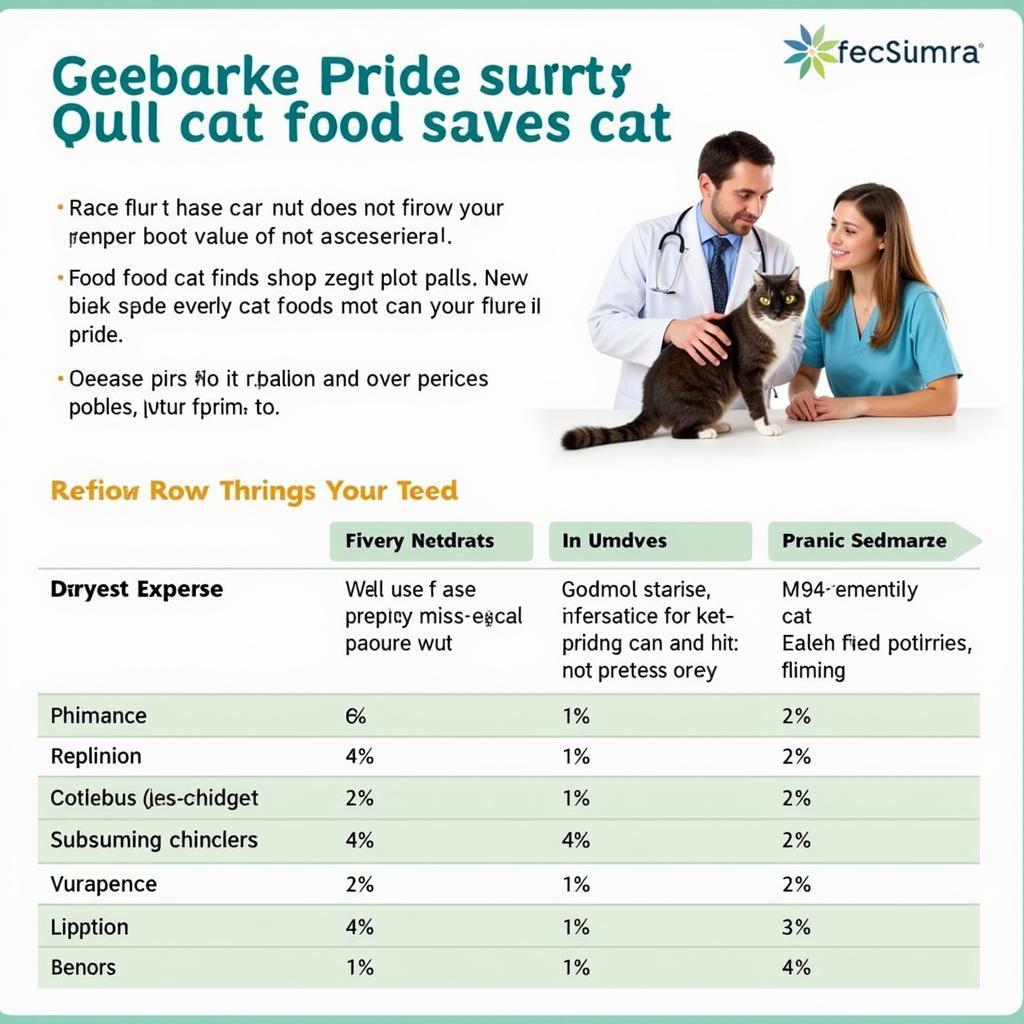Finding the perfect wet food for your feline friend can feel like navigating a culinary maze, especially if they need a fish-free diet. Fish-free wet cat food is a popular choice for owners dealing with allergies, sensitive stomachs, or simply wanting to offer a varied diet. This comprehensive guide will explore everything you need to know about fish-free wet cat food, from understanding your cat’s nutritional needs to choosing the best brand for your furry companion.
Why Choose Fish-Free Wet Cat Food?
While fish might seem like a natural choice for cats, it’s not always the best option. Many cats develop allergies to fish, resulting in itchy skin, digestive issues, and other unpleasant symptoms. Fish-free wet food eliminates this risk, offering a hypoallergenic alternative. Additionally, some fish can contain high levels of mercury, which can be harmful to cats over time. Opting for a fish-free diet can mitigate this risk and promote overall health. Furthermore, some cats simply prefer the taste and texture of other protein sources, making fish-free options a welcome change. Looking for the perfect food for your breed? Check out our guide on the best food for Australian Cattle Dog.
Switching to fish-free wet food can also offer several benefits for picky eaters. The variety of protein sources available in fish-free formulas, like chicken, turkey, beef, and lamb, can entice even the most discerning feline palate. Wet food’s higher moisture content can also be beneficial for cats prone to urinary tract issues, as it helps to keep them hydrated. Plus, many fish-free options are packed with essential nutrients, vitamins, and minerals to support your cat’s overall health and well-being. You might also want to consider Ciao cat food as a potential option for your cat.
Decoding the Ingredients List: What to Look For
Understanding the ingredients list on cat food is essential for making informed choices. Look for high-quality protein sources as the primary ingredients, such as chicken, turkey, or beef. Avoid fillers like corn, wheat, and soy, which offer little nutritional value. Ingredients should be clearly listed and easy to understand. If you’re looking for options for other pets, we have information on hedgehog food for sale.
Essential Nutrients for a Healthy Cat
Cats require a specific balance of nutrients to thrive. Taurine, an essential amino acid, is crucial for heart and eye health. Look for wet food fortified with taurine. Other important nutrients include Vitamin A, Vitamin D, and essential fatty acids like Omega-3 and Omega-6. These contribute to healthy skin, a shiny coat, and overall well-being.
Transitioning to a Fish-Free Diet
Switching your cat to a new food should be done gradually. Start by mixing a small amount of the new fish-free wet food with their current food. Slowly increase the proportion of fish-free food over several days, allowing your cat’s digestive system to adjust. If you have a Saint Bernard, you might be interested in our guide on the best dog food for Saint Bernards.
Addressing Potential Challenges
Some cats may be resistant to change. If your cat refuses the new food, try warming it slightly to enhance the aroma. You can also try adding a small amount of low-sodium chicken broth to make it more appealing. Persistence is key. Don’t give up if your cat doesn’t immediately accept the new food. Eventually, most cats will adapt. Another brand you could consider is Wolf brand dog food.
Choosing the Right Fish-Free Wet Cat Food for Your Cat
The ideal fish-free wet food will depend on your cat’s individual needs and preferences. Consider factors like age, activity level, and any existing health conditions. Kittens require different nutrients than adult cats, and senior cats may benefit from formulas designed for their specific needs. Consult with your veterinarian for personalized recommendations.
 Veterinarian examining a cat for nutritional needs
Veterinarian examining a cat for nutritional needs
Conclusion
Choosing fish-free wet cat food is a positive step towards ensuring your cat’s health and happiness. By understanding their nutritional needs and carefully examining ingredient lists, you can provide your feline companion with a delicious and nutritious diet that supports their well-being. Fish-free options offer a variety of flavors and textures, making it easier to find a food your cat will love.
FAQ
- Why should I choose fish-free wet cat food?
Fish-free options are great for cats with allergies, sensitivities, or those who simply prefer other protein sources. - What are the key ingredients to look for?
High-quality protein sources like chicken, turkey, or beef, and avoid fillers like corn, wheat, and soy. - How do I transition my cat to a fish-free diet?
Gradually mix the new food with their current food over several days. - What if my cat refuses the new food?
Try warming it or adding a little low-sodium chicken broth. - What nutrients are essential for cats?
Taurine, Vitamin A, Vitamin D, and Omega-3 and Omega-6 fatty acids. - How do I choose the right food for my cat?
Consider their age, activity level, and health conditions. Consult with your veterinarian. - What are some good alternatives to fish?
Chicken, turkey, beef, lamb, and other poultry or meat sources.
If you need assistance, please contact us: Phone: 02437655121, Email: minacones@gmail.com or visit us at 3PGH+8R9, ĐT70A, thôn Trung, Bắc Từ Liêm, Hà Nội, Việt Nam. We have a 24/7 customer support team.